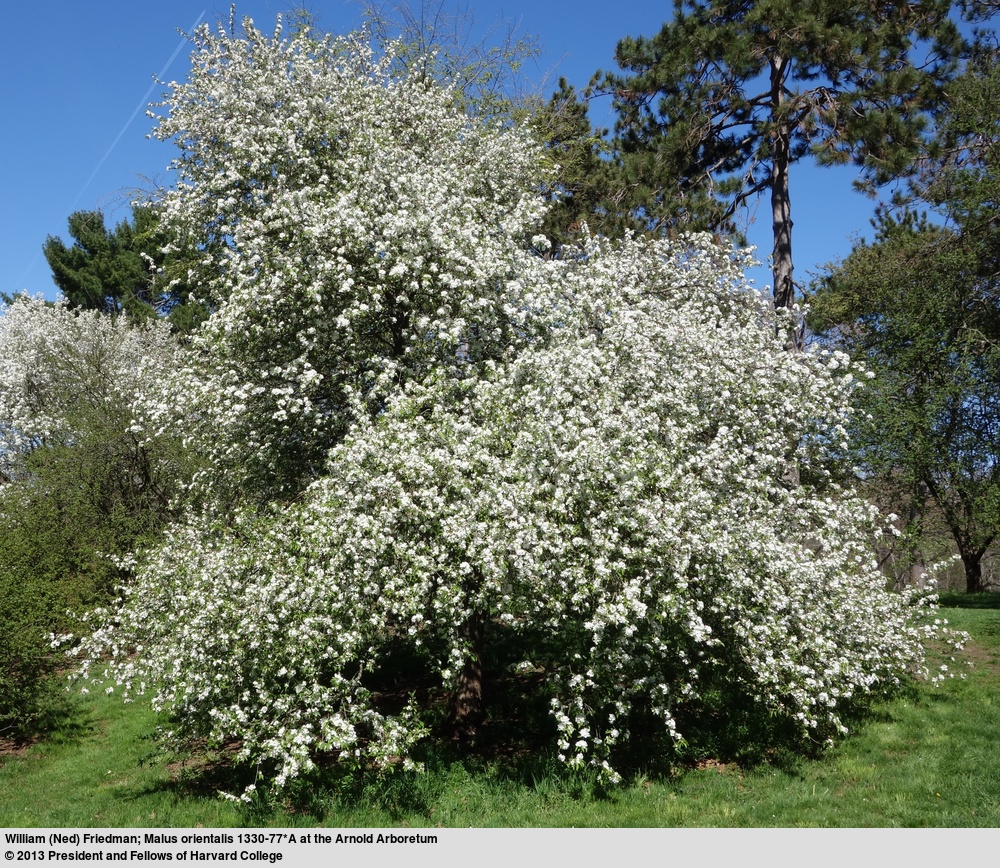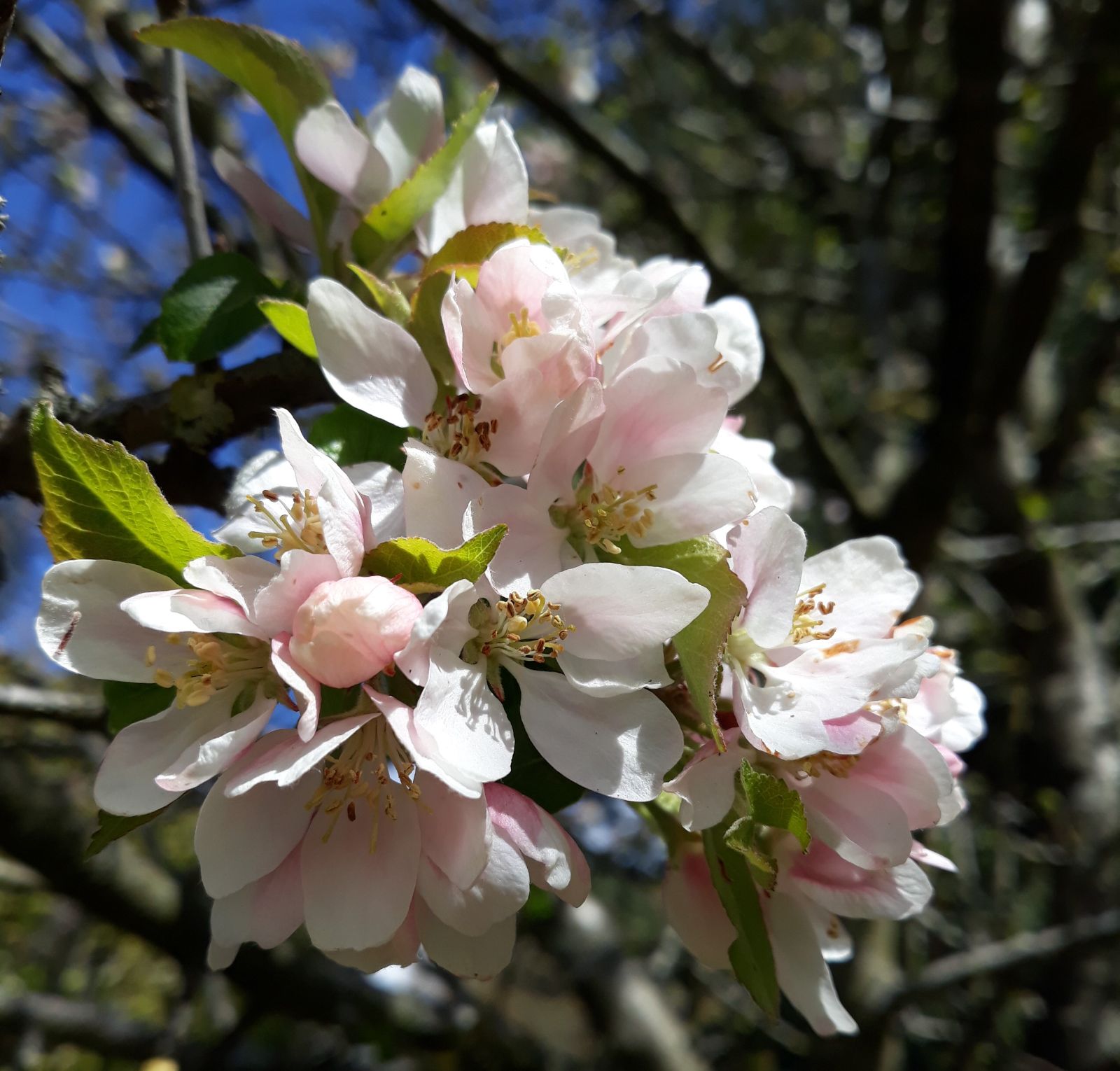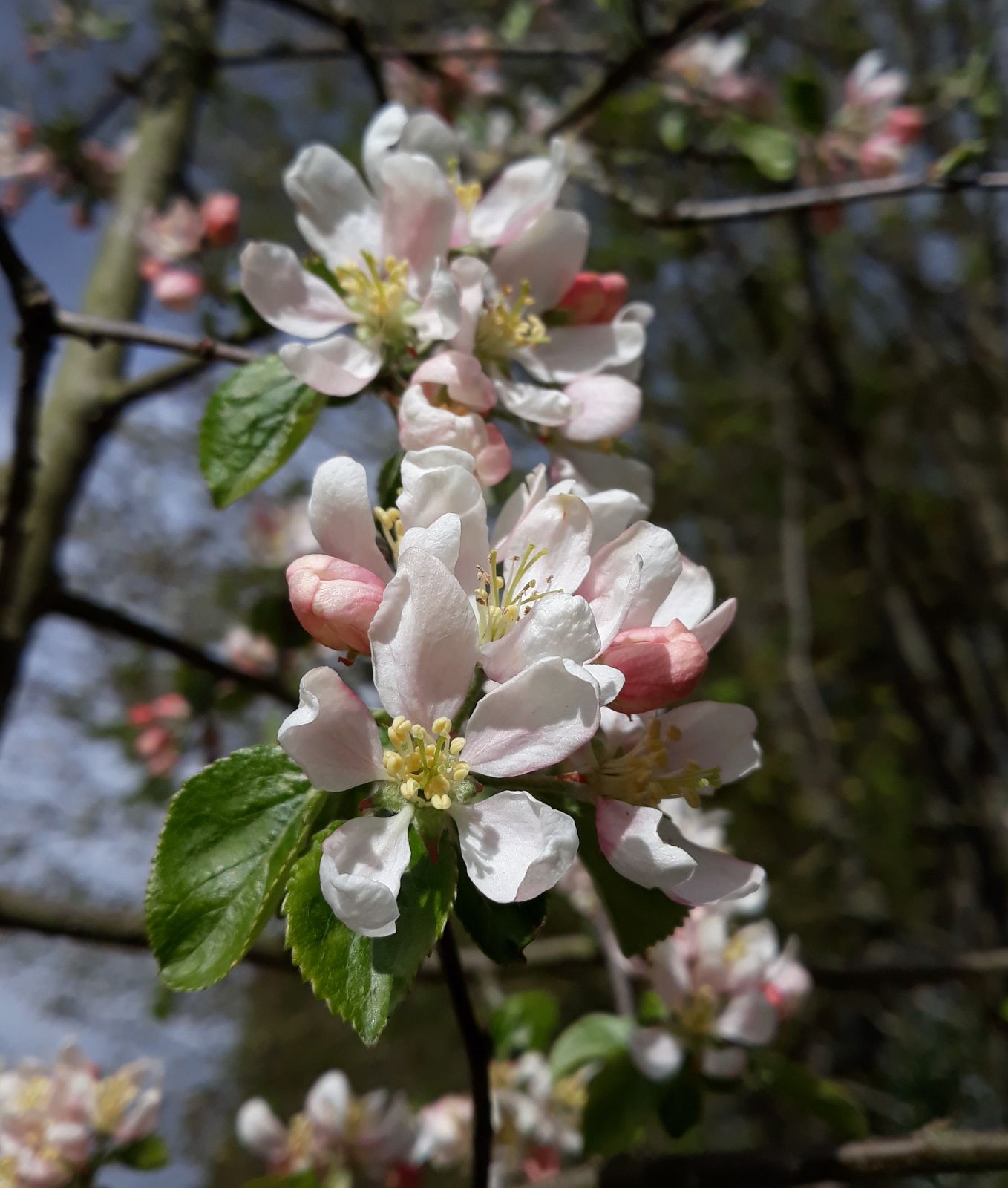Malus orientalis
Sponsor
Kindly sponsored by
Francine: 'after many informative Tours and Study Days with the IDS I feel it only fitting to help and promote such a wonderful organisation'
Credits
Julian Sutton (species), Nick Dunn (cultivars) (2021)
Recommended citation
Sutton, J. & Dunn, N. (2021), 'Malus orientalis' from the website Trees and Shrubs Online (treesandshrubsonline.
Genus
Synonyms
- Malus orientalis subsp. montana (Uglitzk.) Likhonos
- Malus sylvestris subsp. orientalis (Uglitzk.) Browicz
- Pyrus paradisii M.F.Fay & Christenh.
Other taxa in genus
- Malus × adstringens
- Malus angustifolia
- Malus × arnoldiana
- Malus asiatica
- Malus × astracanica
- Malus × atrosanguinea
- Malus baccata
- Malus bhutanica
- Malus × brevipes
- Malus chitralensis
- Malus coronaria
- Malus crescimannoi
- Malus Cultivars A-B
- Malus Cultivars C
- Malus Cultivars D-F
- Malus Cultivars G-I
- Malus Cultivars J-K
- Malus Cultivars L-M
- Malus Cultivars N-Q
- Malus Cultivars R
- Malus Cultivars S
- Malus Cultivars T-Z
- Malus dasyphylla
- Malus × dawsoniana
- Malus domestica
- Malus doumeri
- Malus florentina
- Malus × floribunda
- Malus fusca
- Malus × gloriosa
- Malus halliana
- Malus × hartwigii
- Malus × heterophylla
- Malus honanensis
- Malus hupehensis
- Malus ioensis
- Malus kansuensis
- Malus kirghisorum
- Malus komarovii
- Malus × magdeburgensis
- Malus × micromalus
- Malus × moerlandsii
- Malus montana
- Malus ombrophila
- Malus × platycarpa
- Malus praecox
- Malus prattii
- Malus prunifolia
- Malus × purpurea
- Malus × robusta
- Malus rockii
- Malus Rootstock Cultivars
- Malus Rosybloom Cultivars
- Malus × scheideckeri
- Malus sieversii
- Malus sikkimensis
- Malus × soulardii
- Malus spectabilis
- Malus spontanea
- Malus × sublobata
- Malus sylvestris
- Malus toringo
- Malus transitoria
- Malus trilobata
- Malus tschonoskii
- Malus turkmenorum
- Malus yunnanensis
- Malus × zumi
Small tree to 10 m, branches not spiny. Branchlets dark brown and somewhat hairy when young, ageing dark grey. Leaf blades very variable in shape, 3–8 × 1.5–3.5 cm, base usually cuneate; sparsely hairy above at first, becoming restricted to the veins, white-tomentose beneath; petioles 0.5–3 cm, more or less tomentose. Inflorescence 4–6 flowered; pedicels 8–12 mm, densely hairy. Flowers ~4 cm diameter, April-May. Sepals rather short, narrowly triangular, acute, spreading, densely hairy below, almost glabrous above, persistent; petals white or pale pink, obovate; styles about as long as stamens, hairy at base. Fruit globose, 2–3 cm diameter, August-October (Georgia). (Yuzepchuk 1971; Akhalkatsi 2009).
Distribution Armenia Azerbaijan Georgia Iran Russia North Caucasus Turkey NE Ukraine possibly in Crimea
Habitat Forest, especially glades and edges; shrubby vegetation; riverbanks; tolerates dry or mildly saline soils; to 2000 m asl in Georgia.
USDA Hardiness Zone 4-7
RHS Hardiness Rating H6
Conservation status Data deficient (DD)
This is the best characterized wild apple of the Caucasus, extending into the Hyrcanian forest of northern Iran (Yousefzadeh et al. 2019). One of the species whose medium-sized fruits have persistent calyces, it belongs to the taxonomically difficult group around M. sieversii and M. sylvestris. Eaten and sometimes cultivated in its native range (Akhalkatsi 2009), it has been used as a rootstock for M. domestica, at least in Iran (Khoshbakht (2006). Beyond its wild range, this is a rare tree of botanically inclined collections.
Malus orientalis is distinguishable from M. sylvestris, M. sieversii and M. domestica by this combination of characters, following Yuzepchuk (1971): mature leaves white tomentose below, glabrous above except on the veins; leaves not more than 8 cm long; flowering pedicel densely hairy; sepals densely hairy beneath, only slightly hairy above. In practice, identification of a cultivated plant without knowing its origin is likely to prove extremely troublesome.
In Britain it can be seen at Kew, one specimen from 1988 being measured at 5 m × 67 cm in 2010 (The Tree Register 2020). There are several examples at the Yorkshire Arboretum, including one of Azerbaijani provenance planted in 1990 (5 m × 64 cm, 2019) and a younger tree from JLMU 104, collected in the Russian North Caucasus (J. Grimshaw pers. comm. 2020, The Tree Register 2020). There are young specimens at RBG Edinburgh from Georgia (Mitchell, Brown & Harper 327) and the Russian North Caucasus (Royal Botanic Garden Edinburgh 2020a). Elsewhere in Europe there are trees of Iranian provenance dating from 1976 at Gothenburg Botanic Garden, Sweden (Gothenburg Botanical Garden 2020).
In North America it is largely confined to arboreta with good collections of wild Malus. At the Arnold Arboretum there is an original tree from a 1976 Armenian collection (T. Elias 3139), 49 cm dbh in 2015, and younger grafts from it (Arnold Arboretum 2020). The Morton Arboretum, IL has several specimens including two of wild origin from Georgia (Morton Arboretum 2020); another young example from Georgia is recorded at New York Botanical Garden (Royal Botanic Garden Edinburgh 2020b).



